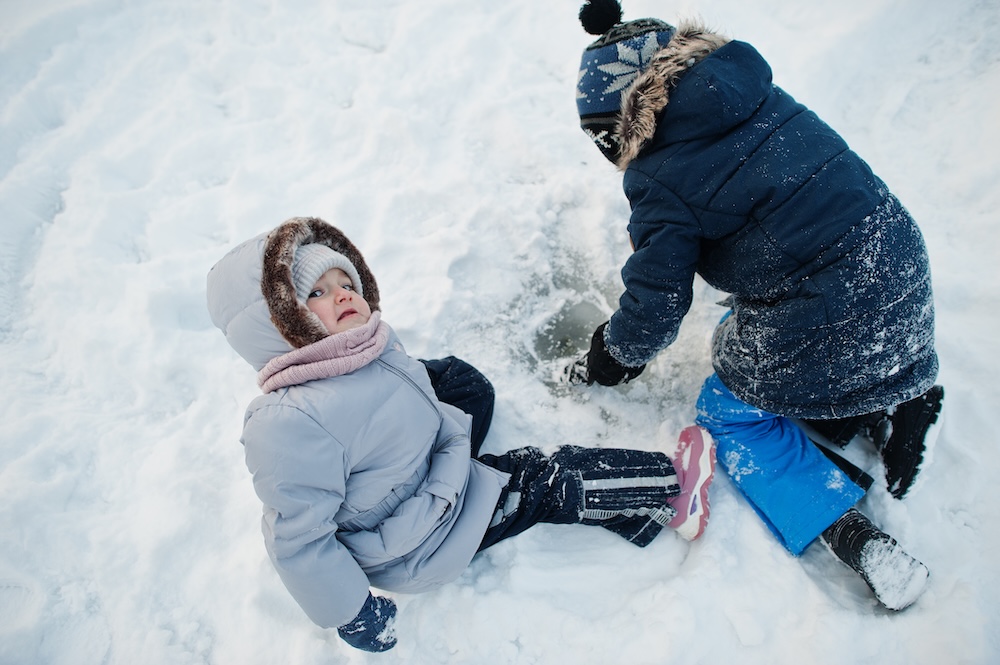Despite the cold, many children find the winter season exciting, especially when they get to play in the snow. Snowball fights, making snow angels, and building snowmen are activities that bring joy to kids. Some also enjoy winter sports like ice skating, sledding, skiing, or snowboarding. While winter activities can be fun and beneficial for children’s health, they can also cause injuries if proper precautions are not taken. It’s important for families to be aware of the common types of winter injuries and how to prevent them.
One major risk is exposure to cold temperatures, which can lead to frostbite and hypothermia. Frostbite occurs when the skin and sometimes the tissue below, freezes. The most susceptible parts of the body to frostbite are the fingers, toes, ears, and nose. Hypothermia occurs when the body’s temperature drops below normal, which can be life-threatening. To prevent both, make sure your child does not spend a long time outside in the cold, especially if the temperatures are freezing or there are windy conditions. It’s also important that your child dresses warmly, with layers, hats, gloves, and warm socks.
If your child gets frostbite, bring them indoors immediately. Avoid rubbing the affected area or placing anything hot on the skin. Instead, place the frostbitten areas in warm water for 20 to 30 minutes or use a warm washcloth. If the pain or numbness doesn’t go away after several minutes, call the pediatrician. Hypothermia, on the other hand, is a medical emergency. If you suspect that your child has hypothermia, call 911 right away and bring your child indoors. Remove any wet clothing and replace them with warm clothes, or wrap your child in a blanket. If they’re not breathing or their pulse is weak, perform CPR.
Winter sports like ice skating, sledding, skiing, and snowboarding can cause injuries if safety guidelines are not followed. Children should only go ice skating on approved surfaces and never alone. Advise your child to skate in one direction and encourage them to wear protective gear like a helmet, knee pads, and elbow pads. For kids who enjoy sledding, it’s essential that they do so properly – always feet first or sitting up and never lying down. Only steerable sleds that are structurally sound, free of sharp edges and splinters, and have a well-lubricated steering mechanism should be used. Children should avoid crowded areas and sled on slopes that are free of obstructions like trees. The slope should also not be too steep or have an incline that is more than 30 degrees.
For skiing and snowboarding, kids should be properly trained by a qualified instructor and be supervised by an adult. Wearing a helmet is important to protect the head from potential injury. It is also recommended to wear goggles for eye protection. As with sledding, don’t let your child ski or snowboard down steep slopes or slopes that are too icy.
In general, when it’s snowing or icy, kids need to be extra careful outside, as slippery surfaces can lead to falls. Wearing proper footwear with adequate traction can prevent slips. If your child does fall and experience a sprain or bruise, we suggest using the R.I.C.E. method (Rest, Ice, Compression, and Elevation) to reduce swelling and pain. Keep the injured area rested without bearing any weight on it. Apply an ice pack to the area for 20-minute sessions several times. Additionally, wrap the area with a bandage and keep it elevated to promote drainage.
If your child has a serious injury, such as a fracture or concussion, please call our office. We hope your family stays safe and enjoys the rest of the winter season!




